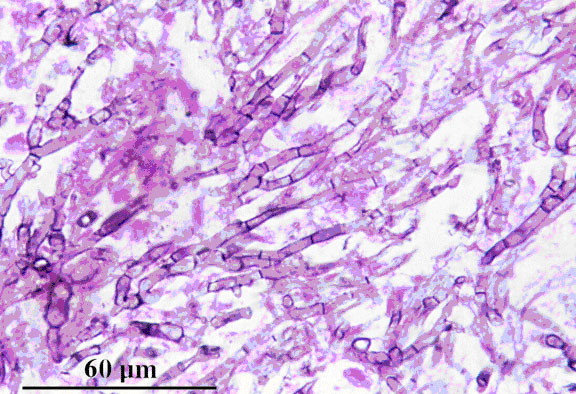Page Contents
OVERVIEW
This page is dedicated to organizing various examples of standardized exam questions whose topic is Aspergillus fumigatus. While this may seem a odd practice, it is useful to see multiple examples of how Aspergillus fumigatus will be characterized on standardized exams (namely the boards and the shelf exams). This page is not meant to be used as a traditional question bank (as all of the answers will be the same), however seeing the classic “test” characterization for a topic is quite valuable.
KEY CHARACTERISTICS OF THIS CONDITION (ON EXAMS)
When it comes to standardized exams, each topic has its own “code” marked by key buzzwords, lab findings, clues, etc. If you are well versed in this code you will be able to more quickly identify the condition that is being discussed, and get the right answer on the exam you are taking. Below is the “code” for Aspergillus fumigatus.
Clinical Presentation:
- Fever that is often persistent in nature
- Chest pain (pleuritic): seen especially if the lungs are infected (very common!)
- Inflammation of skin/sinuses in cases where these areas of the body are infected
Patient History:
- Immunosuppressed patients: those being treated for leukemia/lymphoma
Clinical Workup:
- Histological analysis reveals branching septetate monomorphic fungi (which branches at very acute angles that often form “Vs”
QUESTION EXAMPLES
Question # 1
A 50 year old male comes to his physician because he has been experiencing persistent fatigue, night sweats, and a fever. During the course of his workup it is discovered that he has a chronic myelogenous leukemia (CML). During the course of his treatment for this malignancy, the patient comes to his doctor complaining of headaches, nasal discharge. He also mentions that his right eye has begun to “bother him”. The patients head and neck exam is remarkable for tenderness to palpation over the paranasal sinuses, and a right sided cellulitis around the orbit. Ptosis and proptosisis of this right eye are also noted. The patient receives a lung biopsy that reveals the presence of a pathogen (shown below):

What pathogen is most likely responsible of this patient’s condition?
Explanation # 1
Immunocompromised patient (leukemia treatment) + biopsy showing septate fungus with acute branches (forming Vs) = Aspergillus fumigatus
Question # 2
A 45 year old male beings a course of chemotherapy for acute myeloid leukemia. About 23 days after the induction of therapy, he is hospitalized with symptoms of a fever, cough, and generalized weakness. His vital signs are a temperature of 100.8°F, blood pressure of 100/70 mm Hg, a pulse of 127 bpm, and a oxygen saturation of 94% on room air. A respiratory exam reveals the present of cracked over the left upper lung. Lab studies reveal a total neutrophil count of 150/mm³. A chest X-ray is performed and reveals a dense infiltrate in the left upper lung lobe. The patient is started on broad spectrum antibiotics, however 5 days later he still remains febrile. A bronchoscopy is performed and a tissue sample from the lungs begins to grow a fungal pathogen. What is the likely pathogen?
Explanation # 2
Immunocompromised patient (leukemia treatment) + persistent fever + pulmonary infection (demonstrated by chest X-ray) + fungal pathogen = Aspergillus fumigatus
Question # 3
Explanation # 3
Question # 4
Explanation # 4
TESTABLE FACTS ABOUT THIS TOPIC (BEYOND ITS IDENTIFICATION)
Many questions on standardized exams go beyond simply recognizing the underlying topic. Often there are specific testable facts regarding some aspect of the topic’s pathophysiology/management/clinical implications that are commonly asked. Some of these are listed below:
Treatment:
- Amphotericin B is a good medication to treat this infection.
Page Updated: 09.30.2017